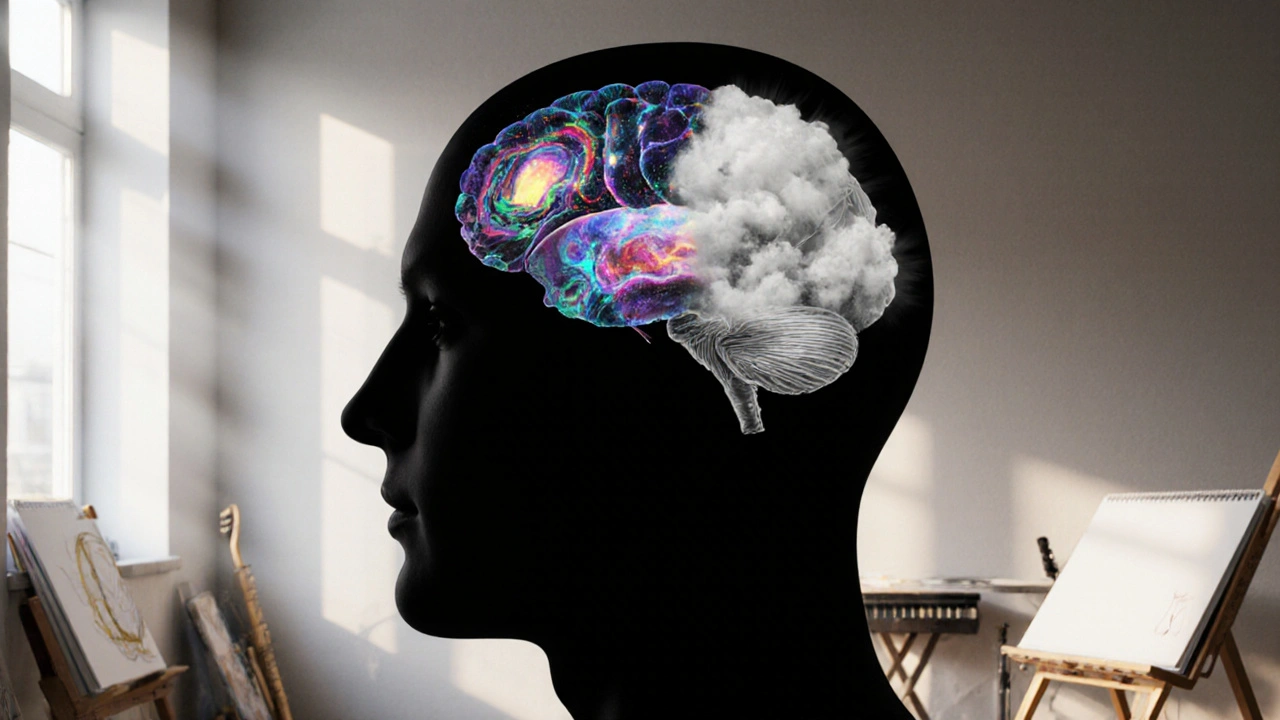Mental Illness and Art: Practical Ways Creativity Can Help
Living with a mental health condition can feel like a constant battle. Sometimes talking isn’t enough, and that’s where art steps in. You don’t need to be a painter or musician – any form of creative expression can give your mind a break, lower stress, and improve mood.
Why Art Works for Mental Health
First, art activates the brain’s reward centers. When you draw, paint, or play music, dopamine flows, which eases anxiety and lifts spirits. Studies from universities show that regular art activities can lower cortisol, the stress hormone, and even improve symptoms of depression and PTSD.
Second, art offers a safe outlet for emotions that are hard to name. Instead of bottling feelings, you can splash them onto a canvas or shape them with clay. This externalization helps you see patterns, gain insight, and reduce the intensity of negative thoughts.
Third, group art sessions build social connections. Sharing a creative space reduces isolation, a major trigger for many mental illnesses. Even virtual art classes create a sense of community without the pressure of face‑to‑face interaction.
Easy Ways to Bring Art Into Your Life
Start with what you have at home. Grab a notebook, some colored pencils, or even a phone camera. Set a timer for 10 minutes and doodle whatever comes to mind. No mistakes, no judgment – just moving your hand and watching thoughts appear on paper.
If you prefer music, create a simple playlist that matches the mood you want to shift toward. Play it while you work, stretch, or sit quietly. Notice how different tempos affect your breathing and heart rate.
For those who like a tactile experience, try simple clay or play‑dough exercises. Rolling, squeezing, and shaping the material can calm nervous energy and give immediate sensory feedback.
When you feel ready, explore structured creative arts therapies. Look for a certified art therapist in your area – the website lists professionals who blend psychology with artistic techniques. They can guide you through projects designed to target specific symptoms, such as anxiety‑reducing mandala coloring or storytelling through collage for trauma.
Even without a therapist, online resources like guided drawing tutorials or music‑making apps can provide structure. Choose a short program, follow the steps, and reflect on how you felt afterward.
Remember, consistency beats intensity. A five‑minute sketch each morning can be more beneficial than a marathon session once a month. Track your mood before and after each creative burst; over time you’ll see patterns and know what works best for you.
Finally, give yourself credit. Creative work is not a test; it’s a tool for mental health. Celebrate small wins – a finished doodle, a song you managed to play, or a clay bowl that didn’t collapse. Those moments add up and build resilience.
Art isn’t a cure, but it’s a powerful ally in managing mental illness. By making room for creativity in your daily routine, you give your brain a healthier way to process feelings, reduce stress, and connect with others. Give it a try today – you might be surprised at how a simple line or note can change your mood.

